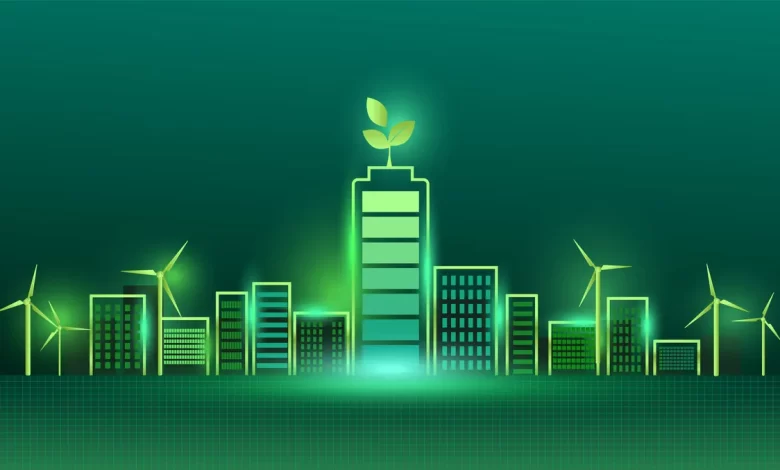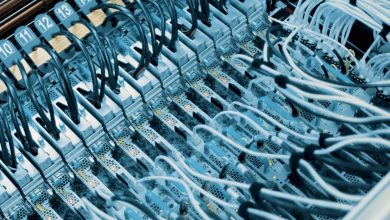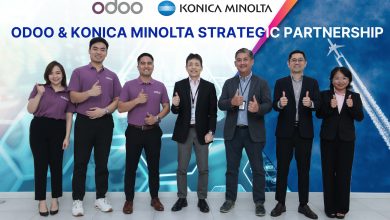Pioneering Sustainable Data Centres in Cyberjaya

By Kamarul Ariffin Abdul Samad, CEO of Cyberview Sdn Bhd
 During Cyberview’s InnoEx – an inaugural innovation expo event held in Cyberjaya last September, Prime Minister YAB Datuk Seri Anwar Ibrahim’s speech stated how our city has the potential to become the preferred investment location for technology companies.
During Cyberview’s InnoEx – an inaugural innovation expo event held in Cyberjaya last September, Prime Minister YAB Datuk Seri Anwar Ibrahim’s speech stated how our city has the potential to become the preferred investment location for technology companies.
In fact, the city has been experiencing notable growth in the data centre space, as the speech by the Prime Minister further announced the latest data centre foreign investment into Cyberjaya from EdgeConneX, a global industry leader, with 200MW-capacity on a 30-acre future campus here.
This new development underpins an increasing demand for data centres in a rapidly growing digital economy, and the role Cyberjaya plays in catering to the digital infrastructure needed. Additionally, recent trends indicate further growth in this sector can be expected in the immediate to mid-term. Nevertheless, while we are committed to supporting the growth of this sector, we are cognisant of the need to strike a holistic and harmonious balance in the overall development plan for Cyberjaya; particularly in ensuring that we do not go off track in reaching the goal of creating a smart and low-carbon Cyberjaya by 2030.
Data centres and resource demands
With an ever-increasing demand for data processing triggered by digitalisation and automation, data centres are thus, critical backbone of our digital age. To illustrate, the Asia Pacific region is increasingly digitised, abetted by the strength of its e-commerce growth and mobile penetration that provide access to massive digital content. All these, contributed to a demand increase for data centres, which Malaysia has been able to capitalise on, emerging as a choice location for data centre investments.
However, recent developments indicate some concerns. For example, a researcher from the University of California, Riverside, said that OpenAI’s generative artificial intelligence (AI), ChatGPT, needs one small bottle of mineral water to cool down for every five to 50 prompts it answers. Meanwhile, Google has also reported an increase of 20 per cent in water consumption across its offices and data centres due to the shift towards growing its AI efforts.
As data centres evolve to cater to AI development and adoption into mainstream working culture, we must address the concerns of increasing emissions and the consumption of resources. While advancements of technology are inevitable, and supporting its growth is necessary, constantly encouraging and embracing innovation in the space of sustainability in tandem, is of equal importance.
Innovating towards sustainability
Part of the government’s Malaysia Madani concept looks into innovation as a thrust towards advancing Malaysia’s economy. More importantly, at its core, it is important to ensure environmental sustainability in our quest for economic prosperity and technological advancement. The conservation of the environment and a sustainable approach to development, therefore, must be seen as second nature, moving forward.
Towards this end, Cyberview recently co-organised a workshop with the Malaysian Gas Association (MGA) in support with the Malaysia Digital Economy Corporation (MDEC), on harnessing potential renewable gases and cogeneration (CoGen) technologies to benefit data centres.
Coming together for the workshop was not only timely but also aligned with the governments strong commitment to transitioning towards a low carbon and sustainable future, as aptly said by Ybrs. Tuan Asdirhyme Abdul Rasib, Under-Secretary, Sustainable Energy Division for the Ministry of Natural Resources, Environment and Climate Change (NRECC) during his opening remarks.
He spoke about how the adoption of energy-efficient appliances like CoGen has been hindered by a lack of awareness regarding their benefits and availability, resulting in limited demand for these products. We agree that there is a pressing need for more extensive efforts to drive awareness on renewable energy. We need more education and outreach efforts to drive adoption within the data centre industry such as partnerships with technology providers and facilitating knowledge exchange platforms.
While delivering the welcoming remarks on behalf of Ybrs. Tuan Abdul Aziz Othman, President of the Malaysia Gas Association (MGA), Ybrs. Tuan Ahmad Hashimi Abdul Manap, the Council Member of MGA touched upon the benefits of adopting cogeneration to improve energy efficiency and reduce business expenses. For data centres, this holds particular significance given the surge in demands. I cannot agree more, and I believe that cogeneration will be able to foster a sustainable business model while equipping data centers to adeptly handle increased capacity and contribute to the reduction of carbon emissions.
For Cyberview, the idea is to explore these potentials through a meaningful collaborative framework among Cyberjaya’s tech ecosystem players, government stakeholders, regulators, academic institutions, and others in the city.
Looking into the future, we are confident that with good follow-throughs, Cyberjaya is able to realise a remarkable opportunity of having companies in the city transition towards low-carbon practices while contributing to the country’s vision of an innovation-led economy.
Thus, the stress on environmental, social and governance (ESG) commitments by all is the impetus needed to align industries with the goals outlined by the government through the recently announced frameworks and roadmaps, including the National Energy Transition Roadmap (NETR).
Going green
The NETR sets the goal of renewable energy making up 70 per cent of the local energy mix by 2050. Part of this transition plan is the Malaysia Renewable Energy Roadmap (MyRER), which targets to generate 13 gigawatts of renewable energy by 2025 and 18 gigawatts by 2035 from solar, bioenergy, hydro or new solutions and resources, which could include green hydrogen.
Furthermore, the Dewan Rakyat recently passed the Energy Efficiency and Conservation Act bill, encouraging organisations to manage and reduce their resources better. It requires mandatory energy assessments for larger-scale commercial and industrial companies that consume electricity and natural gas.
Cyberview is in full support of these efforts, especially since we have been putting in place sustainability and low-carbon credentials throughout projects we undertook in the city in the last several years. In fact, with such clear direction to transition from the government, Cyberview will further enhance our efforts in contribution of meeting these national goals.
A recently established ESG framework and 5-year roadmap for the company are in place to ensure that our internal efforts will lead to influence, contribute and impact Cyberjaya’s development into a smart and low-carbon city.
On our part, through a masterplan that focuses on smart mobility, we had been able to embed sustainability components particularly, by encouraging the use of electric vehicles (EVs) in the city. Our partnerships with Yinson Greentech, Roda Emas Sdn Bhd in establishing Go To-U electric vehicle (EV) charging stations and in welcoming Tesla Motors to Cyberjaya are all aimed at reducing emissions.
Emissions are further reduced by the centralised cooling facilities using chilled water that we established through Pendinginan Megajana Sdn Bhd. This system is currently being used in more than 46 buildings, reducing 7,000 tonnes of emissions from the atmosphere annually.
Since 2016, about RM5 million has been invested by Cyberview and our partners to develop and install photovoltaic (PV) cells in parking areas and rooftops to harness solar energy into our energy mix.
We are also exploring further opportunities with other potential partners on harnessing solar and renewable energy for Data Centers in Cyberjaya, including the feasibility of a floating solar power plant on the surface of bodies of water via the enhanced Corporate Green Power Programme and Third Party Access (TPA).
These efforts are aligned with the NETR, and we are looking to develop further and push innovation towards increasing the efficient use of energy and other resources to achieve Cyberjaya’s low-carbon city objective by 2030.
Concurrently, we look forward to collaborating with those looking into solutions for better resource efficiency and sustainability as we uphold the government’s goals of achieving net zero emissions by 2050.




